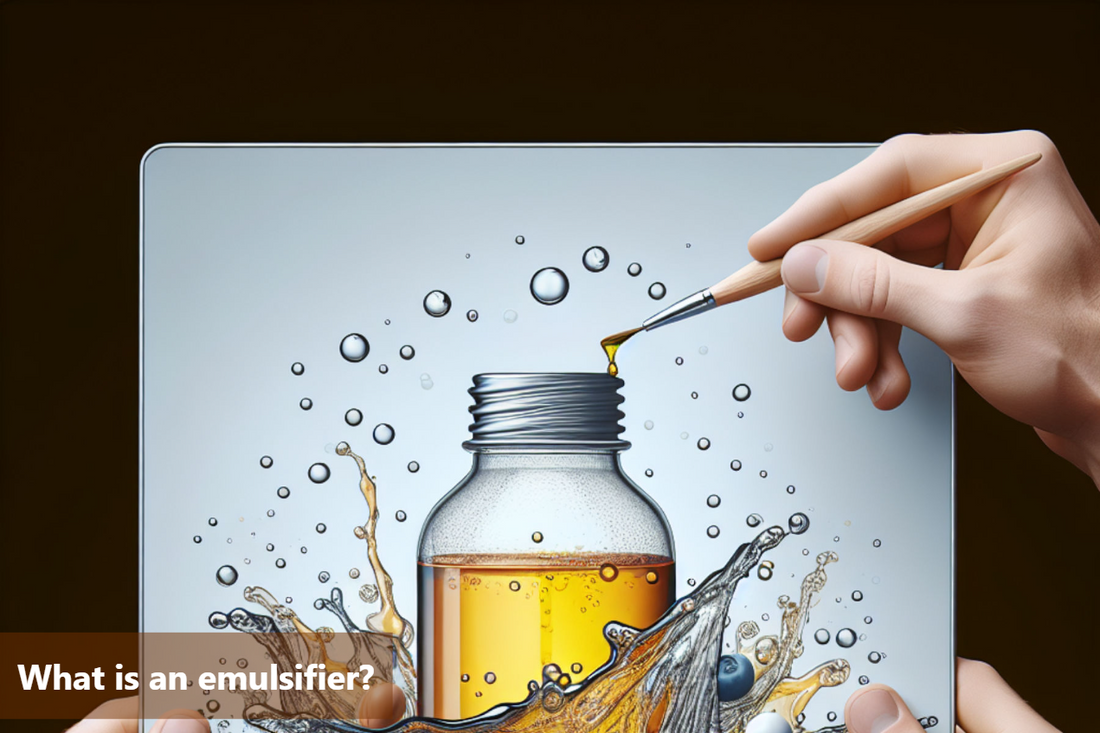Emulsifiers are chemicals that play a crucial role in various industries by stabilizing mixtures of oil and water. These compounds are essential in creating stable emulsions, where immiscible liquids are combined uniformly.
In the food industry, emulsifiers are commonly used in products like mayonnaise and salad dressings to prevent separation of oil and water. Similarly, in the cosmetic industry, they help in achieving the desired texture and consistency of creams and lotions.
Understanding the function of an emulsifier is crucial in ensuring the stability and quality of various products. Without emulsifiers, many food and cosmetic items would have a short shelf life or inferior appearance.
Types of Emulsifiers
Emulsifiers play a crucial role in various industries, especially in the food and cosmetic sectors. They are essential ingredients that help stabilize and blend oil and water-based components in products. Let's delve into the types of emulsifiers and their specific uses:
1. Surfactants: Surfactants are a common type of emulsifier used in both food and cosmetic products. They work by reducing the surface tension between oil and water, allowing them to mix effectively. In food, surfactants are often utilized in dressings, sauces, and ice cream to prevent separation.
2. Lecithin: Lecithin is a natural emulsifier derived from sources like soybeans and eggs. It is commonly used in margarine, chocolates, and salad dressings to create a smooth and consistent texture. Lecithin acts as a stabilizer, ensuring the even distribution of ingredients.
3. Polysorbates: Polysorbates are versatile emulsifiers that find extensive use in the cosmetic industry. They help blend water-soluble and oil-soluble ingredients in products like creams, lotions, and makeup. Polysorbates enhance the texture and overall quality of cosmetic formulations.
Understanding the distinct types of emulsifiers and their functionalities equips manufacturers with the knowledge to create high-quality and stable products for consumers.
Functions of Emulsifiers
-
Reduction of Surface Tension: Emulsifiers reduce the surface tension between oil and water molecules, facilitating their even dispersion throughout a mixture. This property helps in creating seamless integration of oil and water in products like mayonnaise, salad dressings, and moisturizing creams.
-
Stabilization of Emulsions: Emulsifiers play a crucial role in preventing separation or phase reversal in products by forming stable emulsions. This stability ensures that the components of a product remain uniformly mixed, thereby enhancing its texture and overall quality.
-
Preservation and Longevity: Emulsifiers contribute to the longevity of products by inhibiting microbial growth and spoilage. This preservation function is essential for maintaining the quality and safety of various oil and water-based products.
-
Enhancement in Various Industries: In the food industry, emulsifiers are used to improve the texture, taste, and shelf life of food products. In cosmetics, they are essential for creating smooth and stable emulsions in creams, lotions, and skincare formulations. Emulsifiers are indispensable for achieving the desired consistency and quality in a broad range of products across different industries.
Common Emulsifiers in Foods and Cosmetics
Emulsifiers play a crucial role in various industries, particularly in the food and cosmetic sectors. These substances are essential for blending oil and water-based ingredients, creating stable and homogeneous products. Let's explore some common emulsifiers found in everyday foods and cosmetics, along with their specific functions.
Lecithin
One prevalent emulsifier in food products is lecithin, often sourced from soybeans. Lecithin helps maintain the texture and consistency of foods like chocolate and margarine by preventing ingredient separation.
Polysorbate 80
Another widely used emulsifier is polysorbate 80, commonly found in ice cream and salad dressings. It enhances the texture and mouthfeel of these products.
Cetearyl Alcohol
In the cosmetic industry, one common emulsifier is cetearyl alcohol, which is used in various skincare products. It helps mix water and oil-based ingredients to create smooth lotions and creams.
Glyceryl Stearate
Another example is glyceryl stearate, which serves as an emulsifier and stabilizer in cosmetics like moisturizers and sunscreens.
Understanding the function of these common emulsifiers not only ensures product quality but also highlights the importance of these additives in the formulation process of everyday items.
Exploring Emulsifiers: The Science Behind Stabilizing Mixtures
Emulsifiers play a crucial role in various industries, serving as essential ingredients that enable the harmonious blending of oil and water-based components. Their significance lies in their ability to stabilize and maintain the consistency of products, making them integral in the production of a wide range of items, from food to cosmetics.
One key function of emulsifiers is to act as a bridge between oil and water molecules, preventing separation and ensuring a uniform mixture. This property is especially valuable in food products such as mayonnaise, ice cream, and salad dressings, where emulsifiers help maintain texture and flavor.
In the cosmetic industry, emulsifiers are vital for formulating creams, lotions, and other skincare products. By aiding in the dispersion of water and oil phases, emulsifiers ensure product stability, smooth application, and hydration benefits.
Overall, emulsifiers enhance the quality, appearance, and shelf life of various goods, making them indispensable in modern manufacturing. Understanding the function and importance of emulsifiers is key to appreciating their ubiquitous presence in everyday items and their impact on the overall consumer experience.
DiabeSmart is the first food range exclusively crafted for diabetics. Enjoy clinically tested, delicious products that let you keep your favorite food habits while managing your blood sugar levels effortlessly.
This Blog post is an initiative by DiabeSmart, to provide accurate and Nutritionist / Doctor approved information related to Diabetes. DiabeSmart is India's first Food brand designed specifically for Diabetics, that has been clinically tested on Diabetics and Pre-Diabetics to deliver 55% - 70% lower Sugar spikes. DiabeSmart is part of Lo! Foods - India's leading brand for Everyday Functional Health foods.











